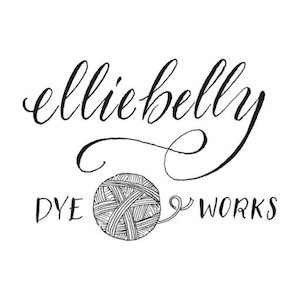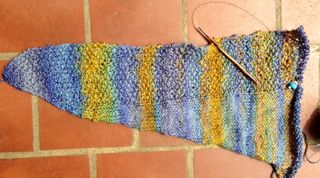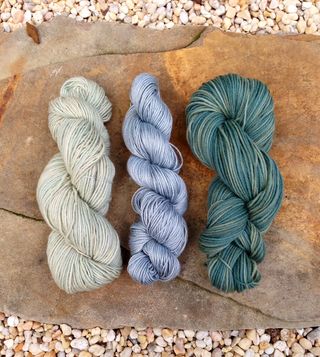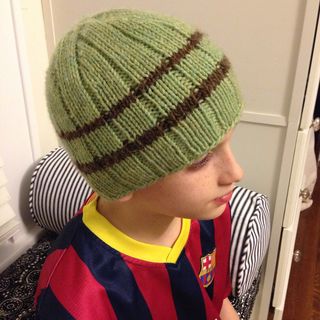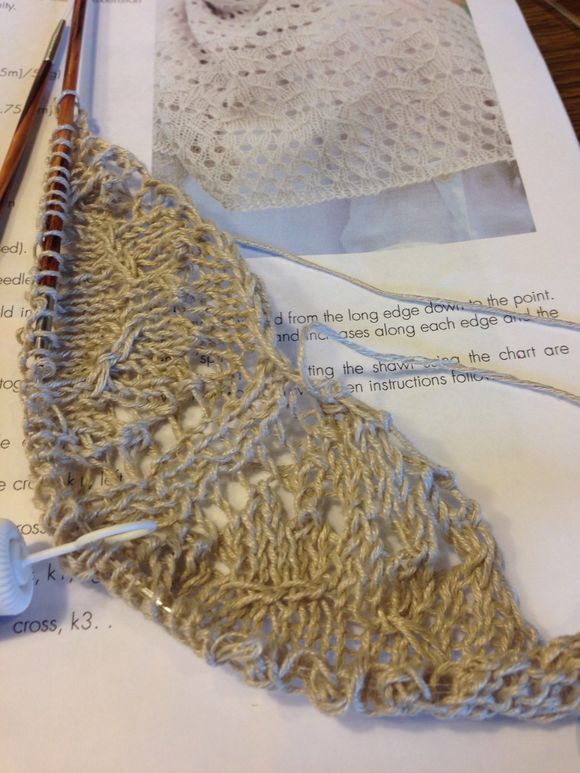Diane, whose beautiful photoblog is well-worth checking out, commented that she wanted to knit a Nae, but was confused by the pattern. It can be hard to visualize before you get about one-quarter of the way into it, so here are some thoughts and pictures to help.
The start is the point on the left in this photo, with the cast on of a few stitches. At this point, you begin work on what will be a 3" band of moss stitch, and it will run across the top of your shawl. To orient yourself, visualize the start of the shawl as the top left-hand corner point of a triangle, where the base edge will be along the top of your knitting, and the point will be bottom center as your knitting grows. This is surprisingly hard to explain — I'm not so sure that helps, so here's a bit more.
The starting point of the project is still on the left. As you continue to knit the moss stitch border, on the top here, you also begin to knit the stockinette stitch triangle below it. You do this, starting on the right side of the project, with what at first is just a couple of the stockinette stitches. See how few stitches are on the row over on the left side? You grow the triangle with one increase, after the first knit stitch on every right side row (every other row). I followed the advice of some knitters who suggested increasing every fourth row, to get a less steep line. You can see my big blue marker, reminding me to increase. From that point on, you continue, doing the stockinette portion first, followed by the moss stitch border, and then you turn your work for the wrong side row.
You get a better idea of it once you see it in progress. This is about one-third of the way in.
And here, you can see the start of the project on the left, with the moss stitch border first increasing to its full 3" width, and then the stockinette portion beginning to increase once the border is in place.
Diane, I hope this makes it all clear. It's a lovely pattern, and although summer trips have cut into my knitting time, I want to finish this up before cooler weather hits.
